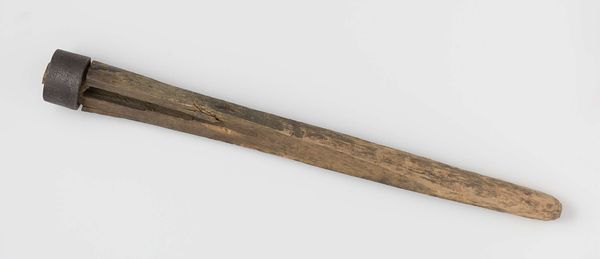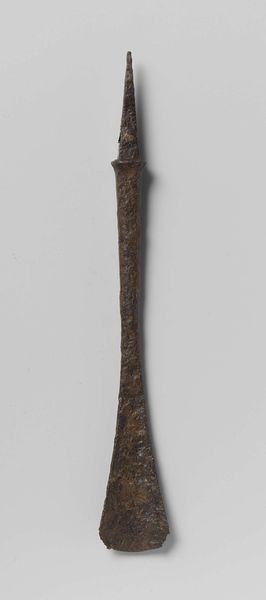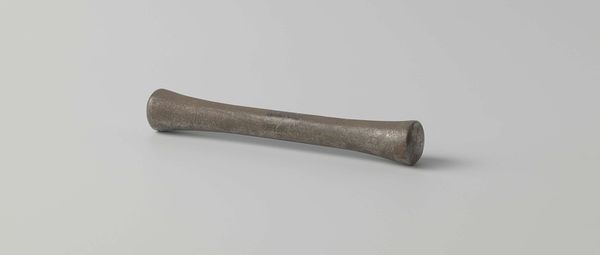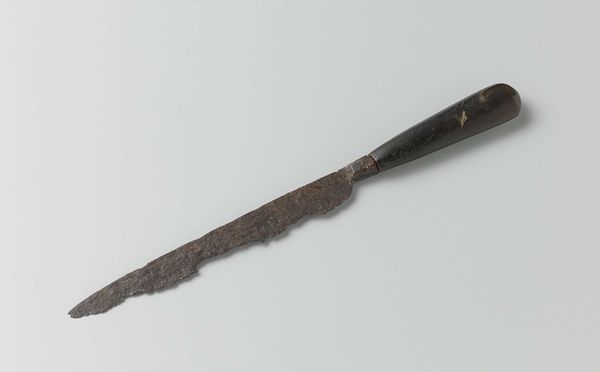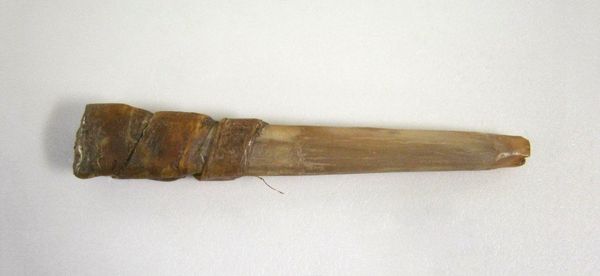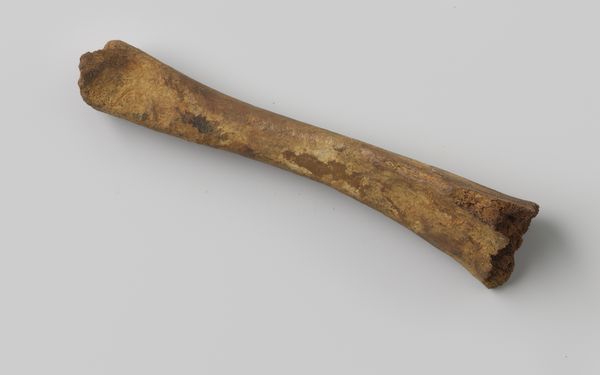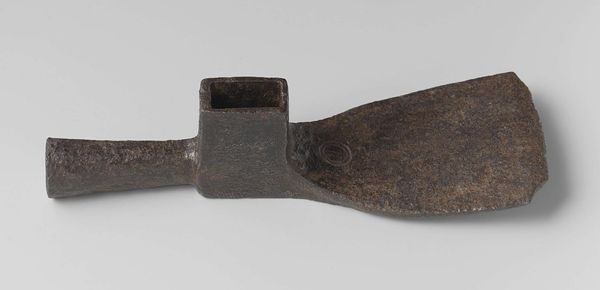
metal, found-object, sculpture, wood
#
medieval
#
metal
#
sculpture
#
found-object
#
sculpture
#
wood
Dimensions: length 12.7 cm, width 4.8 cm, diameter 2.5 cm
Copyright: Rijks Museum: Open Domain
Curator: This unassuming object, entitled "Hamer met ijzeren kop en houten steel," dates back to roughly 1590-1596. The artist is anonymous, but the materials—iron and wood—speak volumes about the period. What's your initial take? Editor: A blunt force, in its purest form. It is rustic and earthy, suggesting directness, labor and, of course, creation and destruction. I feel grounded, immediately transported back to a time where the human and tool were one and the same. Curator: Indeed. This hammer, humble as it appears, connects to larger social narratives about labor, class, and craftsmanship in the late 16th century. What we perceive as a ‘simple tool’ really is loaded with symbolic meaning about how communities at the time made a living. What kinds of stories do you think the hammer tells? Editor: Well, hammers throughout history carry symbolic resonance related to building, transformation, and power. There is Thor's hammer from Norse mythology for example: the power to protect, but also, to destroy. This specific piece’s iron head, married to the wooden handle, perhaps represents the joining of earthly materials with the hand of humanity. Its aged, worn state tells the tale of generations of use, echoing resilience and strength in times of economic transition, while still maintaining a spiritual essence. Curator: I find your insights quite astute, the hammer as a convergence of earthly material and the human capacity to create. Thinking about contemporary application, can this item be said to empower through labour when viewed in a modern-day framework? Does it connect with the ideas of labor movements? Editor: I feel very certain it would resonate across periods of great labor reform. It’s an essential implement for various causes—think of blacksmiths and their contribution to medieval society, or its more contemporary application by, say, railway workers, building tracks across countries in America while facing inequality and discrimination. This piece provides us with continuity of symbolic meaning: the will to build something that transforms lives. Curator: A striking note on which to end, demonstrating how one object can encapsulate so much— from the minutiae of daily labour to the grand narratives of cultural and historical significance. Editor: Yes, sometimes the simplest forms are the most powerful carriers of history, offering profound insights if we’re willing to see beyond the immediate function.
Comments
No comments
Be the first to comment and join the conversation on the ultimate creative platform.
